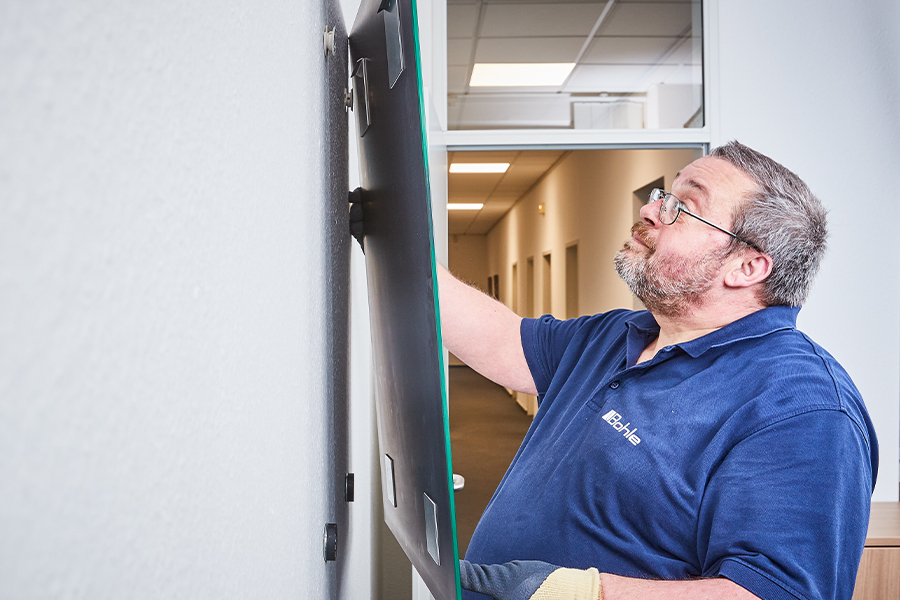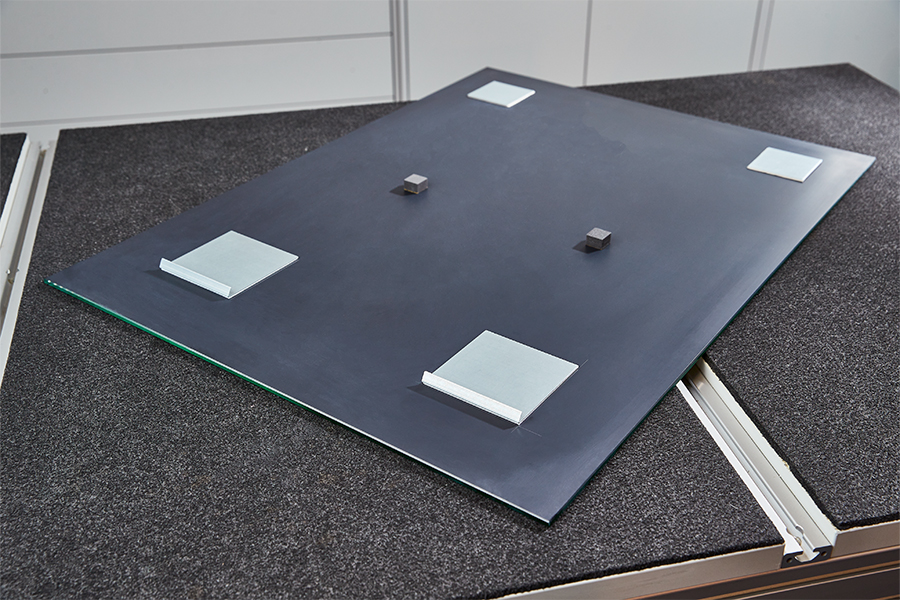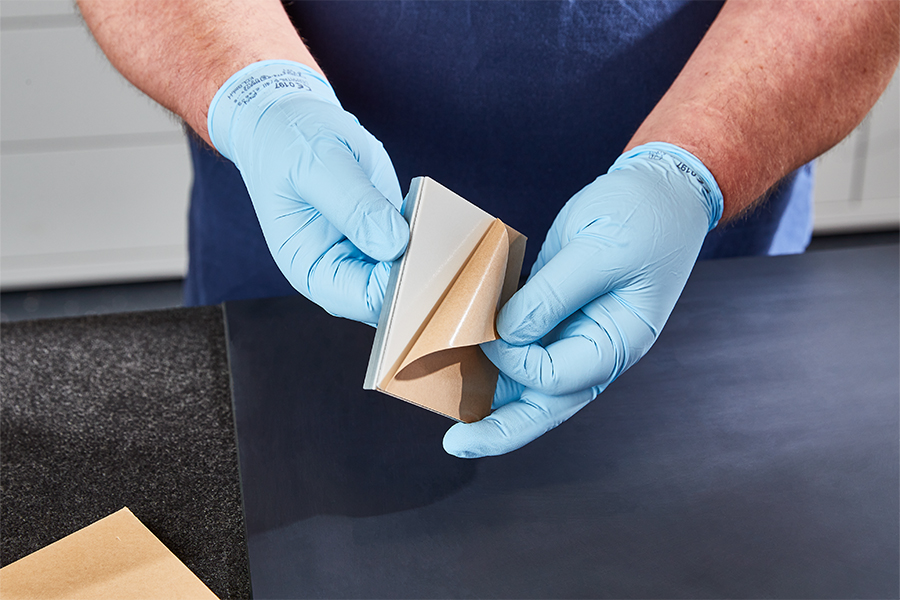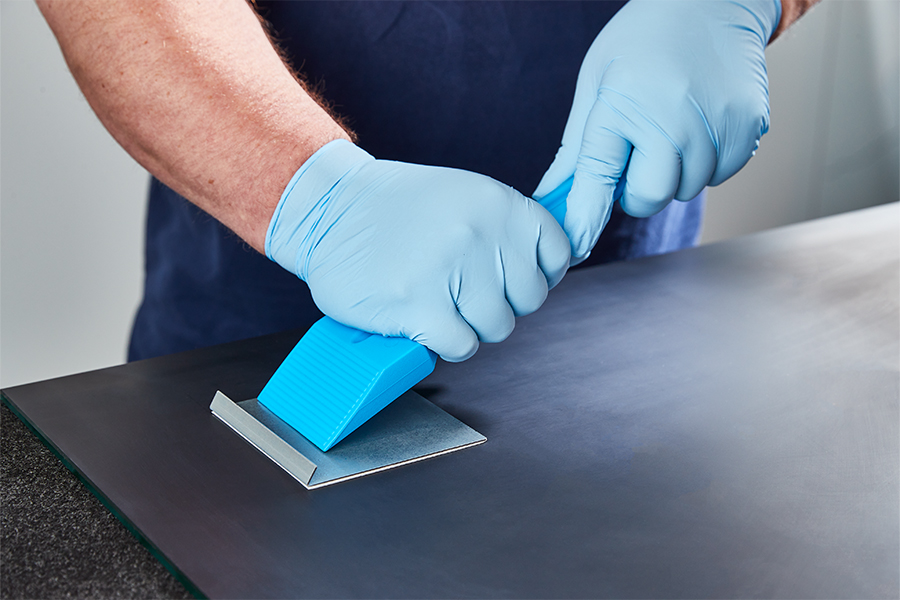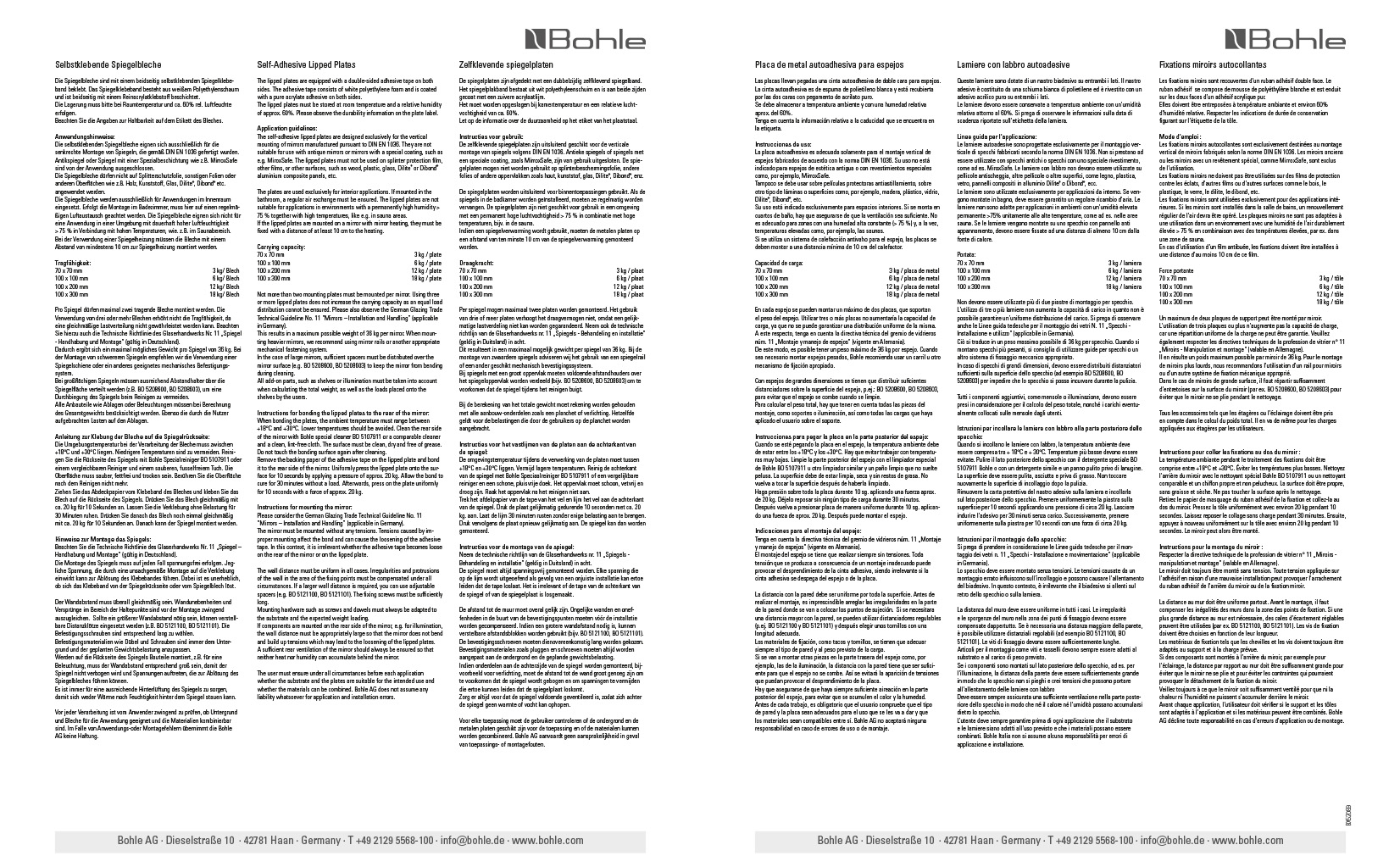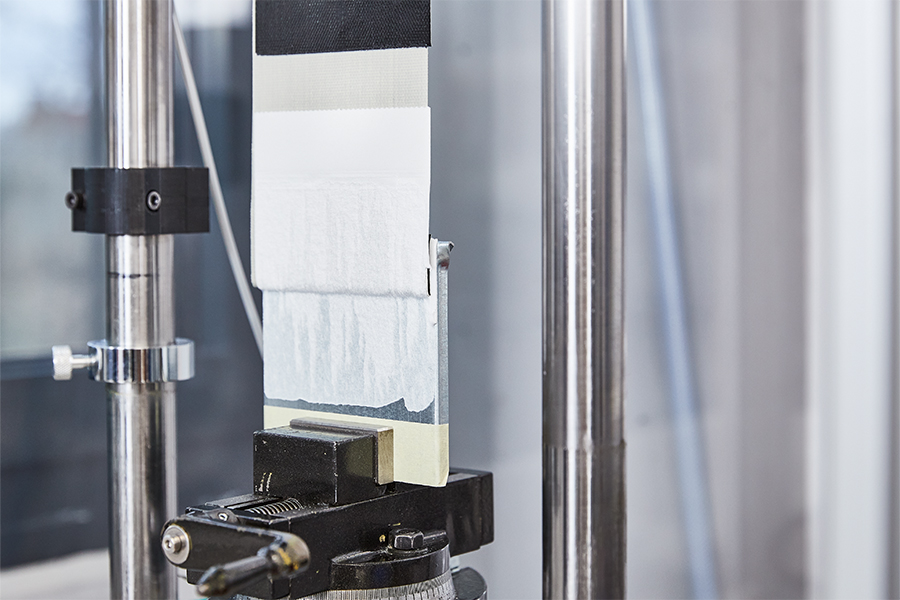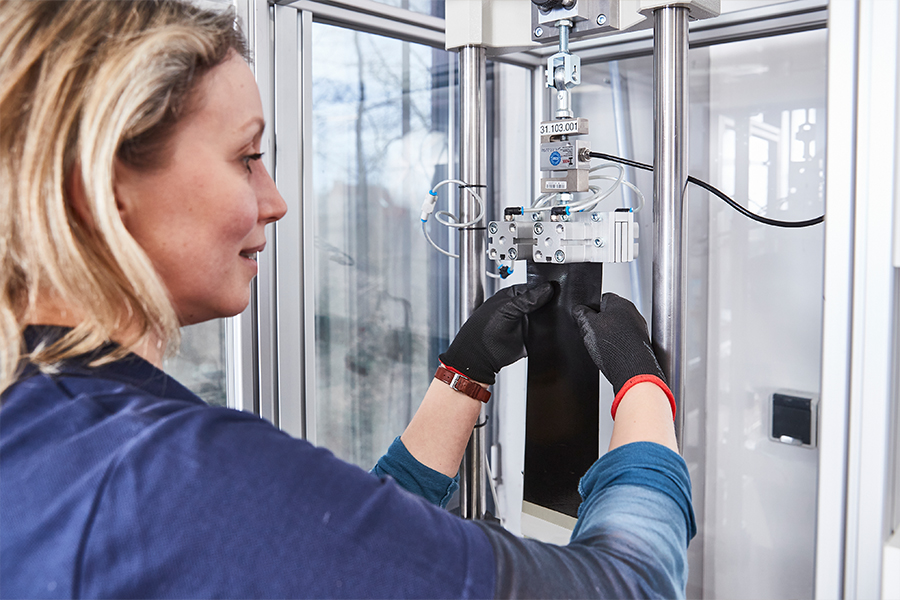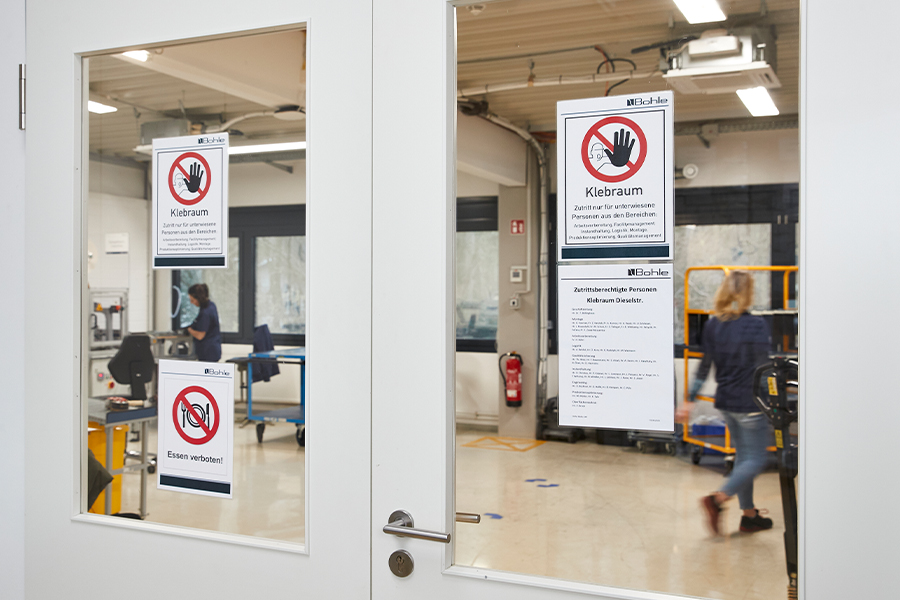Mirror plates
Muscles for mirrors
MADE BY BOHLE
First certified manufacturing process in accordance with DIN 2304: Bohle gives mirrors ultra-strong hold with self-adhesive mirror sheets and defines new standards in terms of load-bearing capacity, safety and durability.
Hanging mirrors with mirror plates
Hanging mirrors with self-adhesive adhesive plates is uncomplicated and requires few tools. The mirror plates are simply stuck to the back of the mirror. Thanks to the eyelets or edges on the plates, the mirror can then be hung up and down on the screws in the wall.
Made by Bohle
Production certified according to DIN 2304
Quality is the highest principle
2 important factors: size and load capacity
The size of a mirror plate depends on the size and weight of the mirror. With even weight distribution and horizontal suspension, a maximum of two load-bearing mirror plates per mirror are glued on. If there are two additional plates in the lower mirror area, these only serve to stabilise the mirror on the wall and have no further load-bearing capacity. To hang larger mirrors, the number of mirror plates is therefore not increased. Instead, use larger mirror plates that have a correspondingly higher load-bearing capacity. These dimensions serve as a guide:
Download now
To the shop
Mirror plates are available in many shapes and varieties. They are available individually or as a set with accessories such as eccentric discs, spacers, magnets or press studs. Mirror plates are either fitted with eyelets or bevelled edges to make it easy to hang the mirror on the wall.
How do mirror sheets stay on the wall?
Acrylic adhesive ensures the high load-bearing capacity of mirror sheets. This is located on the mirror adhesive tape, which adheres to the mirror sheet on one side and to the mirror on the other. Its effect is based on the physical processes of adhesion and cohesion. While cohesion describes the attraction between identical molecules and ensures that the adhesive sticks to itself, adhesion refers to the adhesion of dissimilar molecules to each other, i.e. in this case the adhesive effect between the adhesive and the mirror.
Bohle as a certified specialist bonding company
"To give you the greatest possible security when it comes to mirror mounting, Bohle AG has been a certified specialist bonding company since 2022. Strict DIN 2304 specifications determine our internal bonding processes and therefore also the manufacturing process for mirror sheets, which is certified by the TechnologieCentrum Kleben. For example, our production room is contamination-free and guarantees consistent conditions at all times thanks to controlled air conditioning - precisely tailored to the work and bonding process. All our employees are trained with an additional bonding technology qualification. For a 100% quality promise. Incidentally, Bohle uses suppliers from the local area (< 90 km) for its mirror sheets, thus avoiding unnecessary delivery routes and emissions."
FAQ's
What are self-adhesive bonding sheets suitable for?
Bohle mirror plates have been extensively tested for the attachment of mirrors in accordance with DIN 1036. Any other application must be tested separately.
How do I hang a mirror with mirror plates?
First clean the areas where the adhesive plates are used. Cleaners containing isopropanol, such as the Bohle special cleaner, are best suited for this. Remove the protective film from the mirror plates. Glue the sheets to the back of the mirror at a distance of 10 cm from the edge of the mirror. Drill the holes in the wall to match. The mirror suspension should be located in the upper third of the mirror. Glue the mirror sheet to the mirror, making sure that there are no air pockets in the adhesive, and press the sheets down evenly for at least 10 seconds. The adhesive will begin to bond after 30 minutes. We recommend waiting a further 24 hours at room temperature to ensure that the adhesive has fully cured. With large mirrors, magnets ensure a fixed distance from the wall and thus prevent dangerous tilting.
How many kilos can a mirror plate carry?
The load-bearing capacity of self-adhesive mirror sheets depends on their size. For example, a 45 x 45 mm mirror sheet can carry approx. 1 kg, while a 100 x 200 mm mirror sheet can carry 12 kg. A maximum of two load-bearing mirror sheets are used per mirror.
Why are there magnets in many mirror mounting sets?
In addition to mirror plates, some mirror mounting sets contain magnets, e.g. our safemax sets. However, they have no load-bearing effect. Their attachment merely ensures that the mirrors do not tilt on the wall, but are also fixed to the wall at the bottom. Alternatively, press studs are used in the safeclix sets instead of magnets.
What are eccentric discs used for when attaching mirrors?
Eccentric discs help to align mirrors. They are placed under the screws that are screwed into the wall. Thanks to eccentric discs, mirrors can also be adjusted by +/- 4 mm after suspension, e.g. if the mirror does not hang evenly horizontally. You can change the height by turning the discs.
How long do I have to wait before I can hang mirrors with adhesive plates?
The golden rule of mirror mounting is 10 - 30 - 10. The adhesive plate should be pressed firmly onto the mirror for 10 seconds. This is followed by 30 minutes resting time. Before the mirror is finally hung up, we recommend pressing the mirror plates on a second time for 10 seconds.
